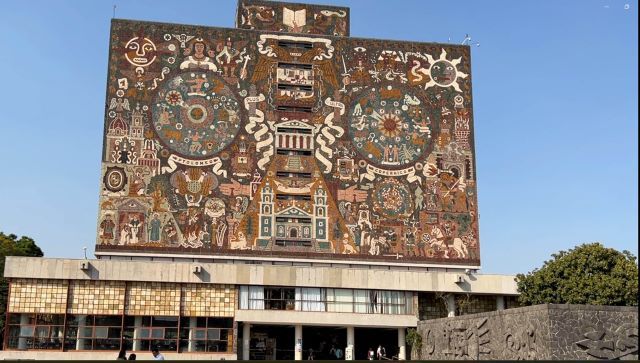The Central Library Mural: A Masterpiece of Painting and Architecture by Juan O'Gorman
This creation by Juan O'Gorman was made with stones of different natural colors, brought from various regions of the country, and arranged over a surface of four thousand square meters. Historical representation of the culture.





